Saudi GP strikes and Aussie GP highlights as 2022 F1 title battle heats up
After a troubled F1 race in Jeddah, the Red Bull vs Ferrari contest played out in front of a packed Albert Park, says Mark Hughes
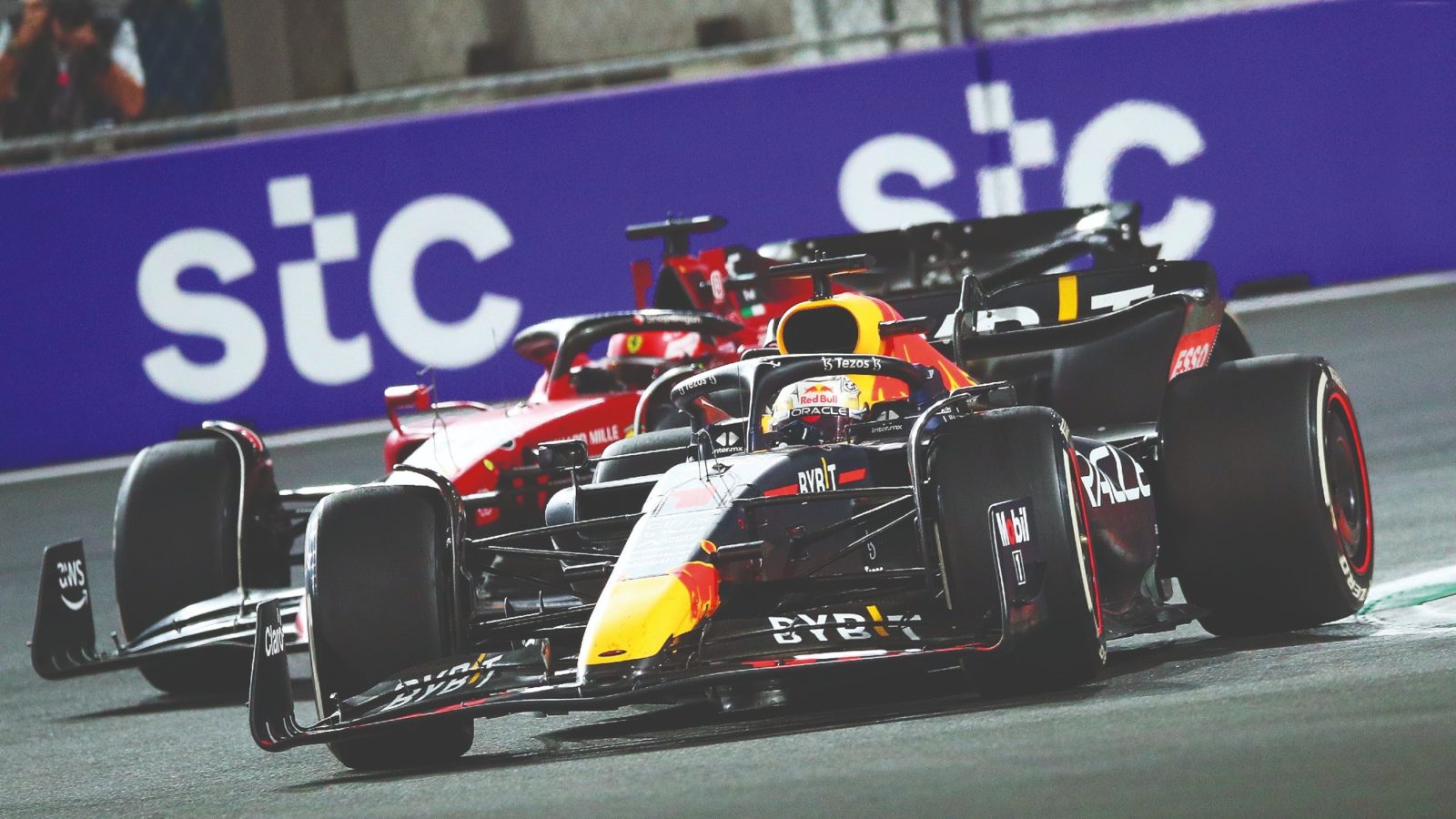
Leclerc and Verstappen produced a great duel in Saudi Arabia
Getty Images
🇸🇦 2022 Saudi Arabian GP
🇦🇺 2022 Australian GP
It was very clear after the season-opener in Bahrain that the early stages of this championship were set to be fought out between the Ferrari andRed Bull teams and that Mercedes was not in a position to compete with them.
The severe porpoising problem suffered by the silver cars (see F1 Tech) was going to require a long-term fix.
The Saudi Arabia race followed just a week after Bahrain, with a two-week gap then until Melbourne for round three. In Jeddah – once a potential driver boycott was headed off after a missile attack on a nearby oil storage facility – a fascinating three-act race played out between the Red Bull and Ferrari teams. Red Bull’s Sergio Pérez secured pole position for the first time in his F1 career, at his 215th attempt, a new record.
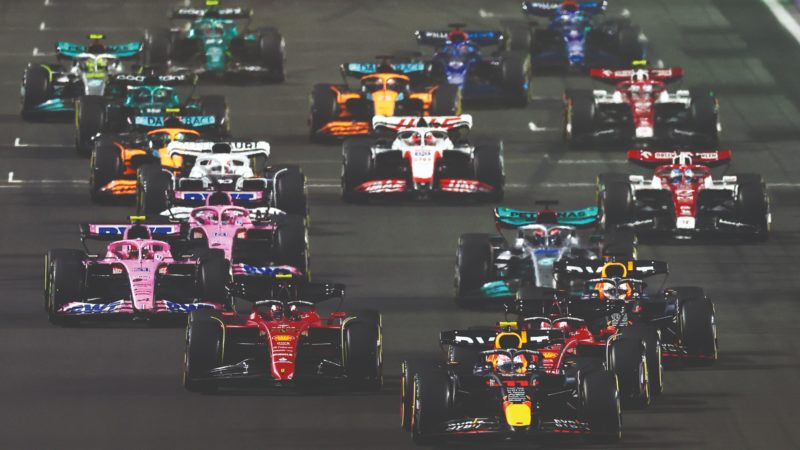
Red Bull and Ferrari were again the class of the field, as Mercedes’ struggles deepened in Jeddah
Getty Images
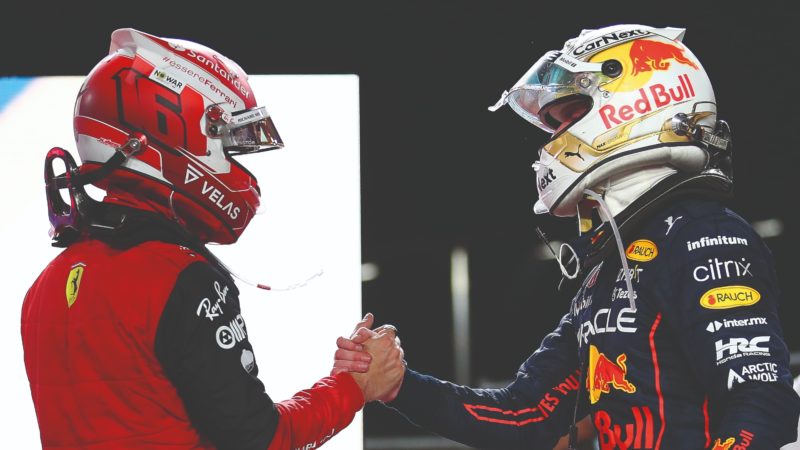
Respect and rivalry under the lights
Getty Images
He was just over 0.1sec faster than Charles Leclerc’s Ferrari, with the second row filled by Carlos Sainz’s Ferrari and Max Verstappen’s Red Bull. This was only the second time in their 24 races together that Verstappen had been out-qualified by Pérez whose lap was a study in big commitment between the walls at very high speed. But unlike Verstappen he managed to do this without taking so much from the tyres in the first half of the lap that they were suffering in the second half.
The first stint of the race was also going to be a tyre challenge, one of ensuring the medium-compound rubber would still be in good shape around the pitstops. This was the first of the race’s three acts and it featured Pérez leading narrowly from Leclerc, Verstappen and Sainz. Pérez was the first to pit but had been unable to pull himself far enough clear of Leclerc to ensure he would definitely still be ahead (see F1 Tactics) after the Ferrari made the responding stop a lap later. That turned out to be immaterial as a safety car for a Nicholas Latifi accident about 30sec after Pérez pitted allowed the others very time-cheap pitstops the following lap. This demoted Pérez to fourth, with Leclerc now leading from Verstappen and Sainz. This was the beginning of the second act.
With all the front-runners now on the hard-compound tyre and with a much-reduced fuel load, it was possible to drive his second stint to the end pretty much flat out. As Leclerc and Verstappen did this in their own private battle they steadily pulled away from Sainz and Pérez. As in Bahrain, the Red Bull was faster at the end of the straights but the Ferrari accelerated better out of the corners. In this way they were incredibly evenly matched but no matter how hard Verstappen pushed, Leclerc was always able to just keep himself out of DRS range. He knew that if the RedBull got to use DRS it was going to be a much more difficult battle. For a dozen laps they went at it hammer and tongs, trading fastest laps, but always with Leclerc in control.
“Mercedes was keen to not repeat its mistake from Monza in 2020”
Could he have kept the Red Bull off his tail until the end in this way? We didn’t get to find out, thanks to a late VSC. Fernando Alonso’s Alpine – and shortly afterwards Daniel Ricciardo’s McLaren – lost drive and were trying to limp back to the pits. Alonso had to abandon his car on-track; Ricciardo got as far as the pit entry lane before coasting to a halt.
This caused some confusion for Lewis Hamilton, who had failed to get his Mercedes out of Q1 after trying an experimental set up that didn’t work. He’d made steady progress on hard tyres and was lapping as fast as fifth-placed team-mate George Russell on tyres 16 laps older.
The VSC represented a perfect chance to make the switch to mediums, but the team was anxious to ensure it did not repeat its Monza 2020 mistake of bringing him in when the pitlane was officially closed, which seemed a possibility as Ricciardo stopped.
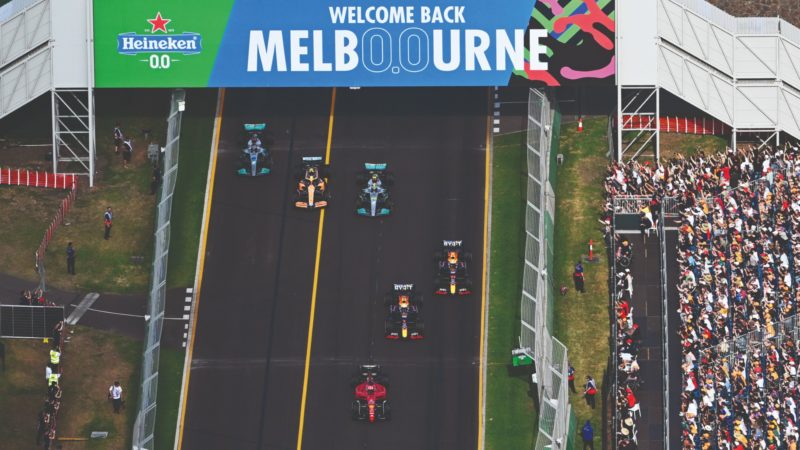
Leclerc got away well…with a better balance around Albert Park, he was largely untroubled
Getty Images
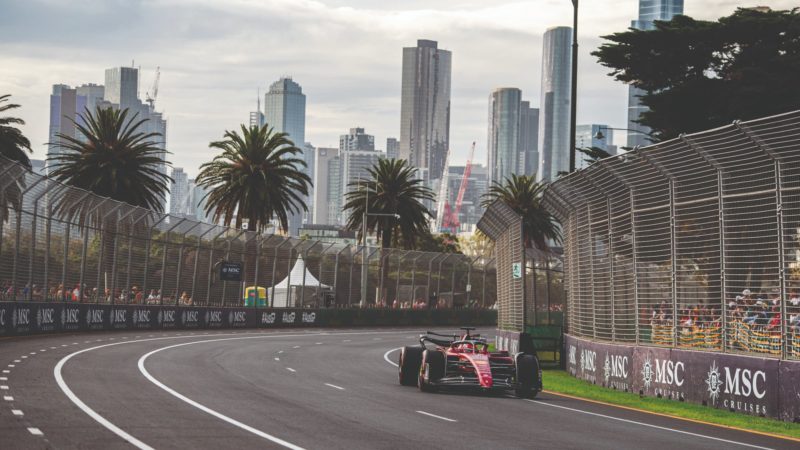
…with a better balance around Albert Park, he was largely untroubled
Arriving on the scene near the end of the lap and finding double waved yellows for the slowing Alonso added another random variable – Hamilton initially careful not to overtake the Alpine until it was obvious it was about to pull off. He was simultaneously waiting to be told whether the pitlane was open or not – and on not hearing anything and seeing the broken-down McLaren there, continued on. In fact the pitlane had still been open at that point but would close for the next two laps, obliging him to stay out and rejoin almost last. From there, he would make a minor recovery to 10th in the remaining laps.
But what the VSC period had also done was cool everyone’s tyres – and those on the Ferraris were more reluctant to be fired back up to temperature on the resumption of racing than those on the Red Bulls. Here was the third and final act of the race as Verstappen took advantage of that superior warm-up to finally get within the DRS zone of Leclerc. An epic cat and mouse game of DRS passing and repassing now played out.
Verstappen used the DRS zone in the final part of the lap to sail around the outside of the Ferrari for the lead – but that put him in front at the DRS detection point at Turn 27 for the main straight. As in Bahrain, Leclerc played it smart, not fighting the pass but just ensuring he was within range at the following detection point – and he duly retook the lead on the pit straight.
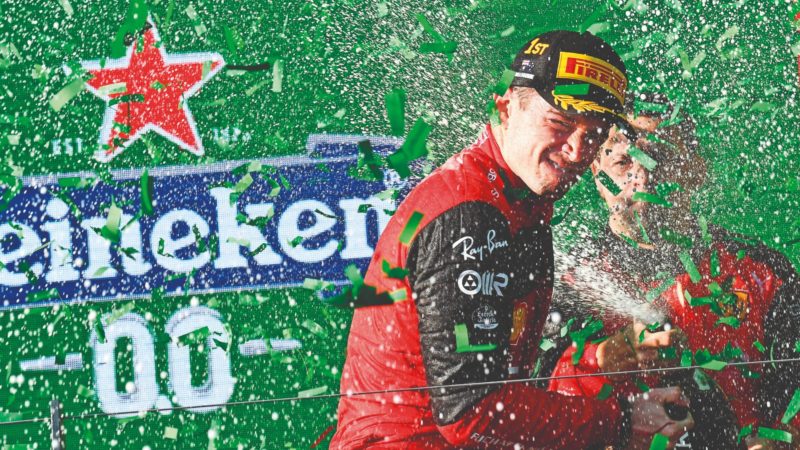
Leclerc secured his second win in three races, and took Ferrari’s first grand chelem since 2010
On the next lap Verstappen placed himself to the inside on the approach to that final corner, partly alongside Leclerc, but this time ensured he didn’t get to the detection line ahead. As they each understood what the game was – it was virtually a repeat of last year’s stand-off here between Verstappen and Lewis Hamilton –and backed off, so Verstappen even locked up his brakes. Upon seeing this, Leclerc instead stood on the gas and sprinted away.
That created enough of a gap to keep the Red Bull off his back for a couple of laps, but it was soon back in range and at the third attempt, Verstappen nailed the move, actually feathering the throttle and closing his DRS on the approach to ensure he was behind at the crucial point – and then completing the DRS-assisted pass on the pit straight. A Turn 1 yellow flag for a collision between Alex Albon and Lance Stroll took away Leclerc’s final chance of a retaliatory move on Verstappen into there to begin the final lap, so ensuring the Red Bull took the win, officially the first for the Red Bull Powertrains engine (although in reality it is still very much a Honda). Sainz and Pérez followed a few seconds behind, with Russell’s Mercedes in a no-man’s land fifth, way adrift of the top two teams but comfortably clear of the midfield scrap, which was ‘won’ on this occasion by Esteban Ocon’s Alpine.
Formula 1 got a great welcome on its return to Melbourne’s Albert Park two years after the Covid-aborted race here. The track had been reconfigured, the former Clark chicane bypassed so that Turn 6 all the way to the fast chicane (now Turns 9-10) was flat out. Initially this stretch was one of four DRS zones but that feature was removed after Friday following safety concerns expressed by Fernando Alonso (whose Alpine was prodigiously quick down the straights in non-DRS running).
Friday running had suggested that, just as in the first two races, there was little to choose between Ferrari and Red Bull.
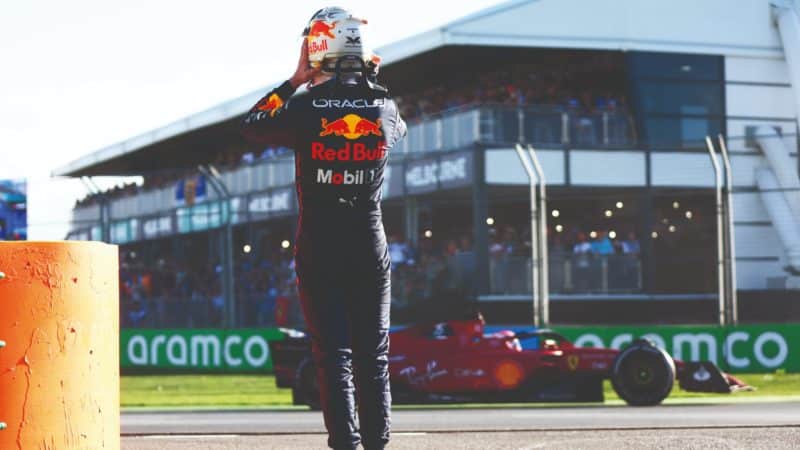
Golden boots, but not currently the golden boy: Verstappen suffered his second retirement in three grands prix in Australia
Getty Images
But the picture changed on Saturday as Leclerc secured pole for Ferrari 0.3sec ahead of Verstappen. It remained like that for the rest of the weekend as Leclerc completed a grand chelem –pole, start-to-finish in the lead, fastest lap.
Verstappen retired from a distant second with a fuel leak, promoting team-mate Pérez, who had been forced to put passes on both Mercedes drivers to attain the position. George Russell took his first Mercedes podium, although he owed his position ahead of Hamilton to the fortunate timing of a safety car that appeared just after Hamilton had pitted, but before Russell had.
“In the better- balanced car, Leclerc’s race lead ballooned”
The 10sec saving to the pack brought Russell out ahead Hamilton and Russell dicing with Pérez’s Red Bull gave the illusion that Mercedes had made progress. In reality, Red Bull was suffering fairly severe front-tyre graining and Mercedes carried much the same pace deficit to the front as at the first two races.
It was those tyre difficulties which proved so limiting to Verstappen even before his retirement. Rear graining had looked to be the issue for Red Bull on Friday and so set up changes were made into Saturday to protect the rear tyres. This gave the car a difficult understeer balance through the slow final sector, where it was losing around 0.3sec to the Ferrari. But the way the circuit evolved through the weekend meant front graining was the issue on Sunday –meaning Red Bull had moved in precisely the wrong direction. In the era of parc fermé regulations, the set up chosen for qualifying is what the cars were obliged to run with in the race. This had the effect of amplifying Ferrari’s advantage. In his much better-balanced car Leclerc did not need to take anything like as much from his front tyres to do the same lap time as the Red Bull.
A few laps of this and Verstappen was despairing that he had no front grip. Leclerc’s lead ballooned. Verstappen got a second bite at the cherry when a lap 23 safety car for Sebastian Vettel (just returned from Covid absence) crashing his Aston Martin out of last place. The safety car wiped out Leclerc’s margin and an understeering run onto the pit straight almost cost him upon the restart– but Verstappen couldn’t take full advantage as his tyres had become too cold at the safety car speeds. Within three corners Leclerc’s tyres were working properly –and he pulled away again.
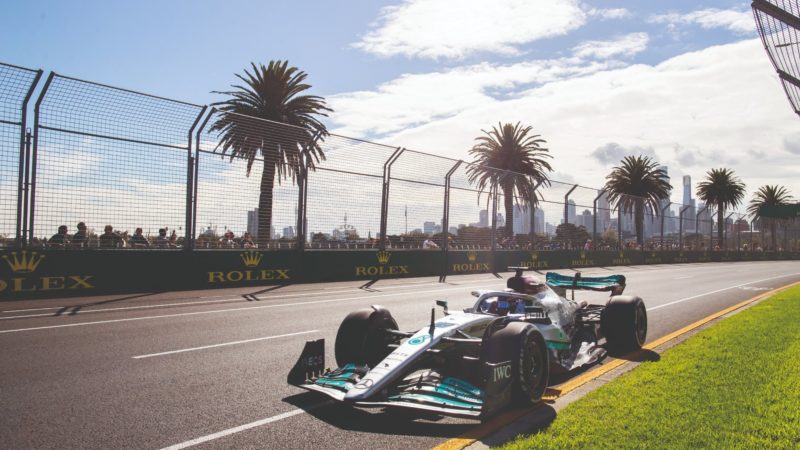
Mercedes looked closer to the pace in Australia, but it perhaps wasn’t the case
DPPI
Just prior to the safety car, Pérez had overtaken Hamilton for third, the Mercedes having sliced down Checo’s inside at the start of the race. Pérez made the pass just before the fast chicane, using the Red Bull’s superior straight-line speed. Hamilton was lining up for a repass on the exit of the chicane, ready to claim Turn 11 but the safety car called off the fight.
“The fates of both Alonso and Sainz were interwoven in Australia”
Russell’s opportune stop under the safety car leapfrogged him past both Hamilton and Pérez. Russell was defending hard from the Red Bull until reminded that tyre management was going to be more important in the result than position. “That’s not what I want to hear,” he responded. Pérez then passed with relative ease but was a long way behind Leclerc.
This was a race of what-ifs for both Carlos Sainz and Fernando Alonso and their fates were interwoven. Sainz had been about to beat Leclerc’s provisional pole in Q3 when the red flags came out for Alonso’s accident at Turn 11, caused by a hydraulics failure mid-corner. Alonso had looked set for a top-four starting slot but would instead start 10th. An electrical glitch on Sainz’s steering wheel meant a delay starting his engine in the pits and he ran out of time to do a tyre-prep lap, leaving him ninth on the grid on a day when he should’ve been fighting for pole. From their compromised slots both Sainz and Alonso opted to start on the hard tyres. Sainz’s steering again suffered a glitch, its replacement hadn’t been programmed properly, putting the car into anti-stall off the grid. In his haste to make up positions, Sainz spun into the gravel on the second lap. Alonso’s race was more promising but ultimately fruitless. The hard-tyre strategy was spoilt by the safety car. He ran fourth for a time, fighting with the Mercs and Pérez but still had to make a stop. With insufficient field spread since the safety car, the stop put him way back. He bailed out, had another set of new tyres fitted and tried to set fastest lap of the race. Leclerc beat him to it – but only just – on the last lap.

